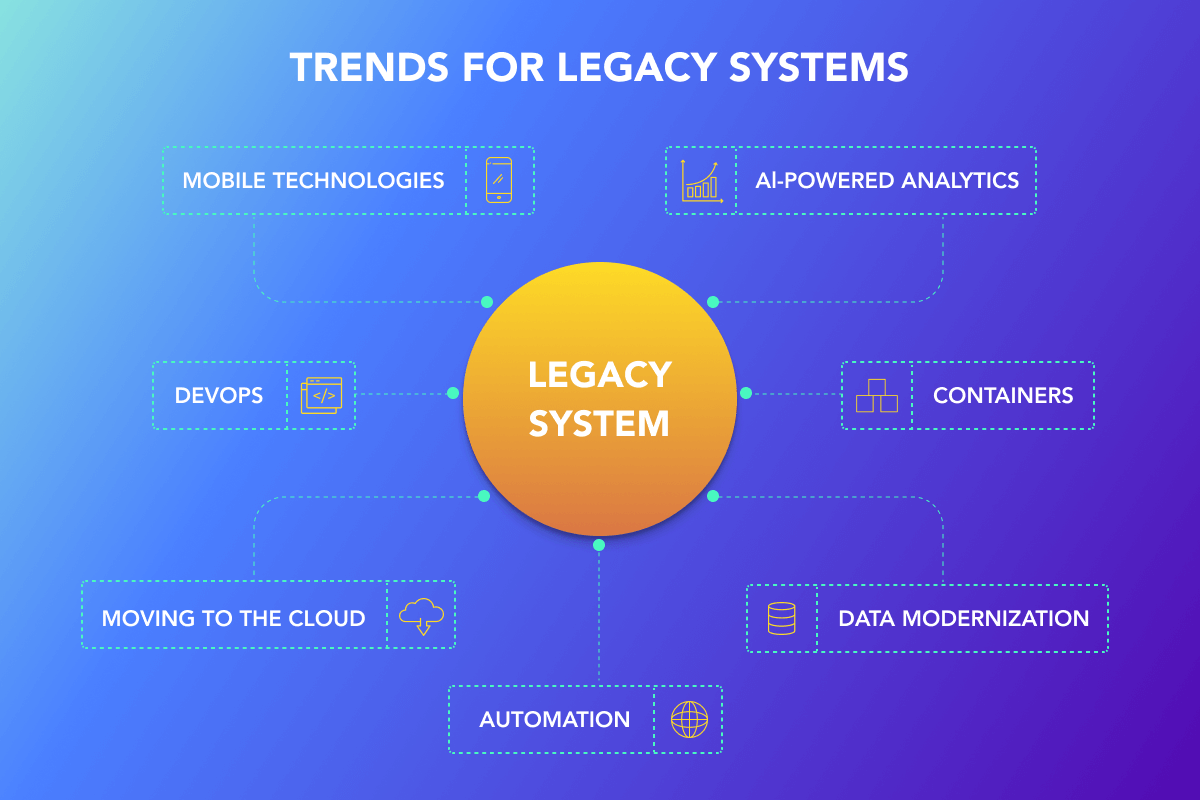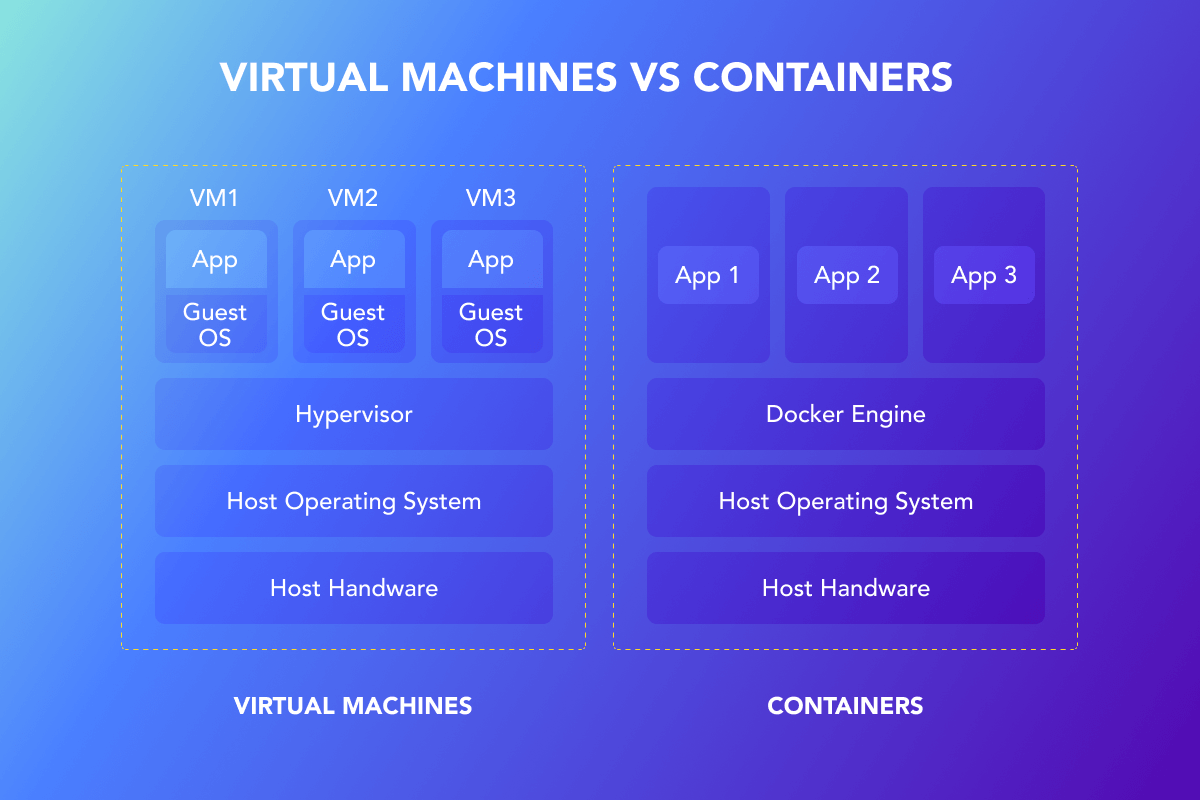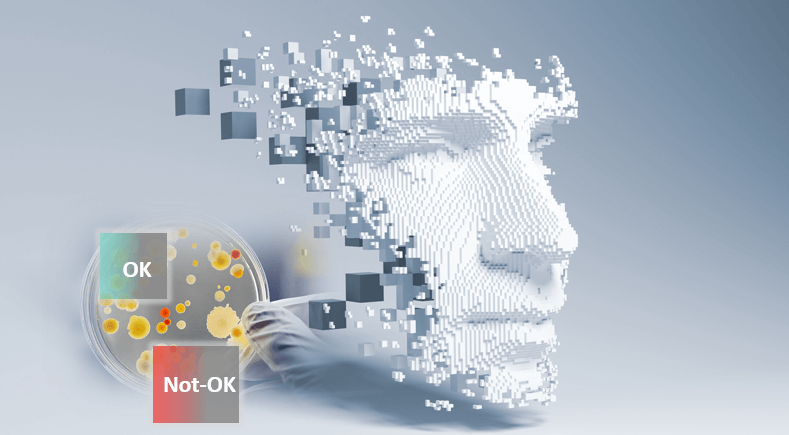“Legacy technology brings with it a legacy relationship between business and technology.”
Over the last few years, emerging technologies have significantly accelerated the pace of digital transformation in many businesses. To stay competitive, a growing number of companies and enterprises are looking for ways to modernize and digitize their businesses in order to make them more efficient, cost-effective, and easy-to-use. According to IDC, 40 percent of all tech expenses will be spent on digital transformation, with enterprise investments in excess of $2 trillion in 2019.
Legacy Systems
Unmodified legacy systems pose the key challenge on the way to digital infrastructure. A legacy system refers to a computer system or program that due to its age is outdated or no longer receives needed support or maintenance, but is essential for vital day-to-day processes within an organization. Because of its outdated architecture, such systems are usually very difficult and expensive to maintain, support, and integrate with the new digital environment.
Fix It or Leave It?
Some people may wonder why they have to fix a legacy system while it is still functioning. Actually, there is a significant number of reasons. First of all, the expenses of running such systems are huge. As a legacy system stores data mostly on a central server, it requires specific technical hardware, which is usually difficult and expensive to manage, especially compared with modern cloud-based solutions. In addition, legacy systems are unmanageably complex, so that a small change or update may trigger a cascade of problems.
In order to optimize the workflow, maximize profits, and gain a competitive edge, legacy systems have to be replaced or at least modernized. Moving a legacy application to a modern operating system is the first step to an effective digital business.
Top Trends of Legacy System Modernization
We provide you with the main methods for the modernization of outdated systems, which will certainly increase the efficiency of the company’s operations, which will subsequently increase profits.

Legacy Software Migration: Moving to the Cloud
The emergence of cloud computing has brought about a real revolution in the way of storing and accessing data. Users do not have to store their files on private servers anymore. In essence, cloud computing is a virtual space that connects users all over the world. By using the cloud, companies can share resources, software, and data all over the Internet. A successful digital transformation of legacy software cannot omit a shift to the cloud. Cloud collaboration enables companies to upload data to the virtual central server, allowing users to access digital assets stored in one place anytime.
Legacy System Automation
Automation is the next step in the legacy system modernization. Manual processes are mostly very painstaking, and legacy systems are gradually dying away, making room for emerging technologies with their more effective and less strenuous solutions. Automated systems streamline company operational processes, eliminate human errors, and reduce operational costs.
DevOps for Costs Optimization
DevOps sounds like magic for modern clients. They can’t believe that it’s possible to save money and speed up processes without losing business effectiveness. That is what DevOps consulting is created for. DevOps engineers can analyze the whole system and choose the best possible services that will revolutionize the operations from writing. For instance, a good DevOps can choose Amazon services that will decrease the cost of data storage on the local server and increase the level of effectiveness.
Mobile-Enabled Technologies
Most organizations and enterprises have already embraced the mobile revolution. The majority of businesses are already applying mobile technologies to their legacy systems. Mobile-driven systems improve customer experience with a mobile-ready infrastructure where all data is available on a secure and centralized server and can be easily accessed from anywhere at any time.
AI-Powered Analytics
Artificial Intelligence, abbreviated as AI, is a term, which gathers a lot of hype today. In essence, AI is a branch of computer science focused on creating a system that can perform human-like tasks. Using AI-driven solutions, computers can accomplish specific tasks by analyzing huge amounts of data and recognizing these data recurrent patterns. AI-powered analytics offers intelligent databases with built-in AI, which monitors and analyzes operational data and then compares them to prescribed parameters in order to detect errors or areas that are to be considered. Such systems provide companies with valuable insight into their business and allow company executives to make more informative and effective decisions.
Containers for Legacy System Modernization
Containers refer to a technology solution that allows to move software from one computing environment to another without damage. A container-based application downloads pieces of software incomplete file systems with everything to make it run reliably: system tools, code, system libraries, etc., ensuring smooth transform to the digital environment. It always runs the same regardless of the environment.

Applying a container-driven solution allows companies to leverage automation, removing dependencies on outdated infrastructure services.
Data Modernization
Today’s business is increasingly data-driven. To stay competitive in the market, companies must wisely operate their internal and external data, getting the most out of it. However, many legacy systems still depend on flat files and hierarchical databases, thus overcomplicating data mining, which is essential for most modern technologies, such as cloud computing, AI, Big Data, Machine Learning, etc. To modernize data, legacy mainframe databases are getting replaced with modern databases. As a result, companies better serve their customers, out-compete their competitors and increase their operational efficiency.
Start Reaping Benefits Using Legacy System Modernization
- Better Design. Let’s be honest, it’s all about good UI/UX design in the end. Websites that look old-school and remind professors’ PowerPoint presentations are repulsive, to say the least. Fluid, attractive design is a must in a modern competitive world. Unfortunately, web and mobile apps built with the utilization of outdated technologies are limited in their design. For instance, Silver Light, a multimedia player created years ago by Microsoft, will become obsolete in a year. Thus, all the platforms and websites created on its basis will also be and look outdated.
- More Secure Solutions. Old-school solutions were designed in times when security regulations were not that strict, and the cost of a breach was small. Today in the era of GDPR, any security issue can result in huge losses for the company. It’s one of the tasks of the CIO in the company to make sure that all the systems work fine.
- Employee and Client Satisfaction. User satisfaction is a key element of business success. By using modern innovative systems with well-developed User Interfaces and user-centric experiences, companies and enterprises enhance customer satisfaction and employee performance.
- Digital-Ready Business. In an increasingly competitive world, it is important for businesses to maximize their efficiency and productivity. Legacy system modernization is the first step on the way to digital transformation.
- Big Data. In today’s digital world, people are connected through various devices, such as smartphones and tablets, which leads to the creation of multiple customer touch-points across different media. The big data concept implies a marketer’s ability to compile and segment a large amount of information gathered from the aforementioned devices with minimum effort in order to better target consumers. Data system optimization allows to utilize Big Data capabilities in order to get the most out of it.
- Better Performance. Another aspect of legacy systems that comes at a high cost is faulting, that sometimes leads to great losses. Therefore, the modernization of outdated systems eliminates errors and hence improves efficiency.
3 Cases of Effective Legacy Systems Modernization: Database Migration
Softengi helped an Australian insurance company to develop a new website with a Customer Management System (CMS) capable of meeting its growing service demand. The previous website of that company was designed as an online system allowing any company or person to book an inspection anywhere in Australia. However, the employed legacy system could not effectively manage significant amounts of data. Softengi developed an innovative website CMS on the basis of the imported databases with profiles of all listed company inspections. With the new system, the company improved its business efficiency and operational performance.
Online Logistics Management System
Softengi introduced a new Logistics Management System at the customer’s request, which automatically processes orders and invoices from distributors to warehouses. In order to develop it, Softengi had to migrate from a legacy solution (OpenVMS/Cobol/Jam, undocumented), designed in 1980, to a new modern J2EE platform. Moreover, to ensure a smooth transition, for a certain period of time, the two systems had to run simultaneously. As a result, the new system improved the company’s efficiency by 34%, elevating the customer experience, delivering more value to partners, and consequently – creating an effective ecosystem of supply chain providers.
Information System of the Unified State Register
Softengi developed the Ukraine Information System of Unified State Registers administered by National Information Systems, a state-owned enterprise operating under the Ministry of Justice. The task was to replace the legacy system with a digital one to facilitate users to access multiple registers and provide citizens with high-quality administrative services. Several unified state registers were moved to a single software platform (UnityBase) to ensure their uniformity. In order to ensure their compatibility, several state registers were unified and moved to a single software platform (UnityBase). All data was transferred to the new system without any loss or distortion and now can be easily maintained and processed.
Final Word
The world is going through a stage of digital transformation in which emerging technologies are playing one of the key roles. To stay competitive, companies and organizations must keep up with technological advances, embracing the opportunities they offer. One of the things that hold many companies from digital transformation and its benefits is legacy systems, especially their maintenance. Modernizing the legacy system opens new possibilities for companies to improve their business efficiency and enhance the workflow.





